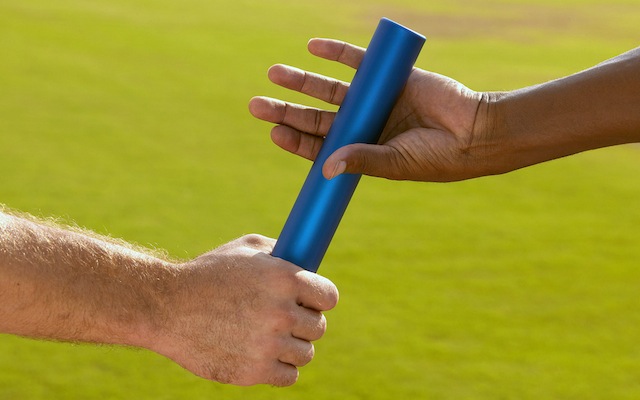Suzy’s a new acquaintance of mine who was recently diagnosed with “some mysterious kind” of diabetes. You’re a little bit like a Type 1, her endocrinologist tells her, because you’re tall and thin and don’t have much insulin. But then again, you’re also somewhat of a Type 2 because your blood sugar levels run a little high, even though you’re injecting a fair amount of insulin.
Well, now, never mind whether someone’s Type 1, Type 2 or Type 47. What kind of tests can you get going to help you figure out what’s going on, and what you can do about it?
These were the things that Suzie and I talked about, as we sat together over a lunch of mixed salad greens, a scoop of salmon, some avocado and heavy on the olive oil. We sat there with her husband, scribbling down lab tests she might request on a paper napkin. You can order these tests on line, by the way, without going through your doctor. But then they’re a lot more expensive. It costs less if you go through your doctor, which then takes it through your insurance. Even if the insurance company doesn’t officially “pay” for the tests, they still do some rigorous negotiating on your behalf, which can knock down the price impressively. So go through your doctor if you can. And if you can’t, but want the tests, then get them on the web.
As for what tests to take, if you ask me, and I guess you’re reading this. So, in a way, I suppose you’re asking, the ideal “test” would take two hours and would go something like this:
Step one – Stop eating anything at 7 PM at night, and when you get up in the morning, still don’t eat a single bite. Drinking water’s okay. In fact, drink a lot, both before you go to bed and when you wake up in the morning. That’s because you’re soon going to be giving about four vials of blood, and it’s easier going if you’re hydrated.
Step two – Get out that 2 – 3 ounce serving of skinless chicken breast you cooked last night. (So, maybe cooking it should have been step 1.) Or get out the 2 – 3 ounce serving of raw tuna you can buy at the health food store’s sushi bar, on your way to the lab. Or in a pinch, boil three eggs, dump out the egg yolks and keep the whites. It’s not that egg yolks are bad. It’s just that, for this step, you want a basically no carb, no fat, all protein bit of food. Anyway, whatever you can manage, get it out and wrap it up. You’re taking it with you to the lab this morning.
Oh, allright. So you want a reason why you’re taking such a strange breakfast with you to the lab. Give me a minute to get all the directions out, and then I’ll explain the why’s behind each step.
Step three. Go to the lab and tell them about the tests you got your doctor’s permission to order for this morning. Those tests should be:
Blood glucose
Hemoglobin A1C
Proinsulin
Insulin
C-Peptide
Insulin Antibodies
Step four. Look with your own eyes to see that all those tests are present on the written lab order sheet. Then look the tests over to be sure that they’re on board with drawing blood for each of these tests 3 DIFFERENT TIMES.
Blood Draw #1 happens before you eat your 2-ounce protein breakfast
Blood Draw #2 happens one hour after you’ve eaten that snack
Blood Draw #3 happens two hours later.
let’s pretend that it’s time for the first blood draw. Do this while fasting. Then as soon as it’s done, go sit in the waiting room, get out your own glucometer and check your blood sugars. It’s a nice little way to know a bit about what’s happening long before you get the official test. Once you’ve done all that, go ahead and eat your protein snack. Then settle in. Relax, snooze if you want. You don’t want to be up and active because that’ll mess up the results a little. You can go drink some water at the drinking fountain. You can go use the bathroom down the hall. But mainly, you want to stay there and stay quiet until it’s time for the next blood draw.
It’s been an hour. So now it’s time for blood draw #2. When it happens, enjoy conversing with the lab tech. As I mentioned, they’re often wise, compassionate and smart. But also, BEFORE they pull out the needle, doublecheck to make sure that ALL the lab draws are being done again (except for the Insulin Antibodies and the Hemoglobin A1C You only need THOSE once). Hardly any medical doctor does all these tests these days. But to find out just how your pancreas is responding, it’ll pay off to get each one of these tests. So, as a reminder, at the 1 Hour Blood Draw, you should be getting tested for:
Blood Glucose
Proinsulin
Insulin
C-Peptide
Once you’ve got all that, get out your glucometer and take your blood sugar again, just for the satisfaction of getting a sneak preview about part of the test results. And then relax.
It’s been two hours. Get your final blood draw. Be sure you get:
Blood Glucose Level test
Proinsulin
Insulin
C-Peptide
Well, that’s been plenty of steps and enough for one blog. Tune in next time for WHY to get these tests. And if you don’t have enough money for these more expensive tests, drop me a line. You see, there are cost-free things you can do that will help point you in the right direction. We can talk about those off-line, and if it’s helpful to others, then we’ll share the information.





